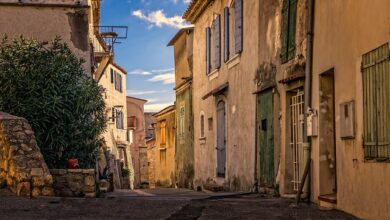Understanding Italian Culture and Traditions

Italy is a country steeped in history, art, and tradition, where the past seamlessly blends with the present. From its ancient Roman roots to its modern-day contributions to fashion, cuisine, and design, Italy offers a cultural tapestry that is both rich and diverse. Understanding Italian culture and traditions provides insight into what makes this Mediterranean nation so captivating. In this article, we’ll explore the key aspects of Italian culture, including family values, food, festivals, religion, and more.
1. Family: The Heart of Italian Society
Family (la famiglia) is the cornerstone of Italian culture. Italians place immense importance on familial bonds, and it’s not uncommon for multiple generations to live under one roof or remain closely connected throughout their lives.
Key Aspects of Italian Family Life
- Close-Knit Relationships: Italians prioritize spending time with family, whether it’s gathering for Sunday lunches, celebrating holidays together, or simply enjoying daily conversations over coffee.
- Respect for Elders: Older family members are highly respected and often play central roles in decision-making within the household.
- Community-Oriented: Even outside immediate families, Italians tend to form tight-knit communities, fostering a sense of belonging and mutual support.
This emphasis on family extends beyond personal relationships; it influences business practices, social interactions, and even political structures in Italy.
2. Food: A Celebration of Life
Italian cuisine is renowned worldwide, but it’s much more than just pizza and pasta—it’s an integral part of the country’s identity and way of life.
The Importance of Meals
- Slow Dining: Italians believe in savoring every bite. Meals are seen as opportunities to connect with loved ones, relax, and appreciate good food. Rushing through a meal is considered almost sacrilegious.
- Regional Diversity: Each region of Italy boasts its own specialties. For example, Tuscany is famous for its hearty ribollita soup, while Naples is the birthplace of authentic Neapolitan pizza. Emilia-Romagna is known for Parmigiano-Reggiano cheese and balsamic vinegar, while Sicily delights with arancini and cannoli.
- Seasonality: Fresh, seasonal ingredients are at the heart of Italian cooking. Whether it’s truffles in autumn, tomatoes in summer, or citrus fruits in winter, Italians take pride in using produce at its peak flavor.
Culinary Traditions
- Sunday Lunch (Pranzo della Domenica): This is a cherished tradition where extended families come together for a multi-course feast featuring antipasti, primi (first courses), secondi (main dishes), contorni (side dishes), and dolci (desserts).
- Coffee Culture: Italians have specific rituals around coffee. Espresso is consumed quickly while standing at a bar, cappuccino is reserved for breakfast, and after-dinner drinks like grappa or limoncello signal the end of a meal.
3. Religion: The Influence of Catholicism
Religion plays a significant role in shaping Italian culture, with Roman Catholicism being the dominant faith. Over 80% of Italians identify as Catholic, and religious traditions permeate many aspects of daily life.
Religious Practices and Festivals
- Church Attendance: While regular church attendance has declined in recent decades, important milestones such as baptisms, weddings, and funerals are still deeply rooted in Catholic customs.
- Easter and Christmas: These are two of the most celebrated holidays in Italy. Easter (Pasqua) involves processions, masses, and traditional foods like lamb and colomba (Easter cake). Christmas (Natale) is marked by nativity scenes (presepi), festive markets, and elaborate feasts.
- Feast Days and Saints: Every town in Italy has a patron saint whose feast day is celebrated with parades, fireworks, and communal meals. Examples include Saint Mark’s Day in Venice and Saint Agatha’s Day in Catania.
Even non-religious Italians often participate in these celebrations, highlighting how deeply ingrained they are in national culture.
4. Art and Architecture: A Legacy of Beauty
Italy is synonymous with artistic excellence and architectural marvels. From ancient ruins to Renaissance masterpieces, the country’s creative heritage continues to inspire people worldwide.
Historical Contributions
- Ancient Rome: The Colosseum, Pantheon, and Roman Forum stand as testaments to the ingenuity and power of the Roman Empire.
- Renaissance Genius: Cities like Florence, Venice, and Milan were epicenters of the Renaissance, producing luminaries such as Leonardo da Vinci, Michelangelo, and Raphael. Their works—including paintings, sculptures, and architecture—remain iconic symbols of human achievement.
- Modern Creativity: Today, Italy remains a hub for creativity, particularly in fashion (Gucci, Prada, Versace) and design (Ferrari, Vespa).
Italians take immense pride in preserving their artistic legacy, ensuring that museums, galleries, and historic sites remain accessible to future generations.
5. Fashion and Style: Elegance Personified
Italy is globally recognized as a leader in fashion and style. Italian designers are celebrated for their craftsmanship, innovation, and timeless elegance.
Fashion Capitals
- Milan: Known as one of the “Big Four” fashion capitals alongside Paris, New York, and London, Milan hosts prestigious events like Milan Fashion Week.
- Florence: Home to Pitti Uomo, a major menswear trade show, Florence showcases Italy’s dedication to sartorial sophistication.
Even everyday Italians embrace fashion as a form of self-expression, favoring tailored clothing, leather goods, and high-quality accessories.
6. Music and Performing Arts: Passion and Expression
Music is another vital component of Italian culture, ranging from classical opera to lively folk songs.
Opera and Classical Music
- Opera originated in Italy during the late 16th century, and composers like Verdi, Puccini, and Rossini have left an indelible mark on the genre. Venues like La Scala in Milan and Teatro San Carlo in Naples continue to host world-class performances.
Folk Traditions
- Regional music styles vary widely, from tarantella dances in southern Italy to Alpine yodeling in the north. These traditions reflect the diversity of Italian culture and its deep connection to local landscapes.
7. Language: The Melody of Communication
The Italian language itself is a reflection of the country’s passion and expressiveness. Often described as melodic and romantic, Italian is spoken with gestures and emotion that convey meaning beyond words.
- Dialects: While standard Italian is based on Tuscan dialects, regional variations abound. For instance, Neapolitan, Sicilian, and Venetian each have distinct sounds and vocabulary.
- Communication Style: Italians are known for their animated conversations, frequent use of hand gestures, and warm hospitality. Engaging with locals—even if only in broken Italian—can lead to memorable experiences.
8. Hospitality: Welcoming Strangers Like Family
Hospitality (ospitalità) is a defining trait of Italian culture. Visitors are often treated like honored guests, invited to share meals, stories, and laughter.
- “Mangia!” (“Eat!”): Food is a universal language in Italy, and sharing a meal is a gesture of friendship and goodwill.
- Warm Greetings: Italians greet friends and acquaintances with kisses on the cheek (cheek-to-cheek air kisses) and enthusiastic hugs.
This openness and generosity make travelers feel instantly at home in Italy.
9. Sports: Football Fever and Beyond
Sports, especially football (soccer), hold a special place in Italian hearts. Serie A, Italy’s top football league, attracts millions of fans, and matches are followed with fervor.
- Football Clubs: Teams like Juventus, AC Milan, Inter Milan, and Roma inspire fierce loyalty among supporters.
- Other Sports: Cycling (e.g., Giro d’Italia), motorsports (e.g., Formula 1), and water polo also enjoy widespread popularity.



